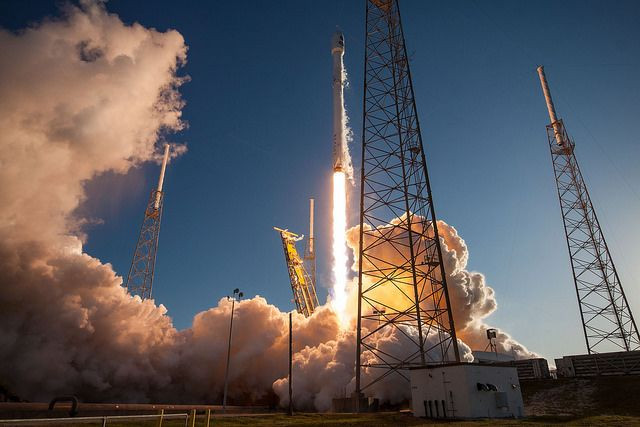Watch: SpaceX Test-Fires Upgraded Falcon 9 Rocket Aimed At Rapid Reusability

Elon Musk’s SpaceX has test-fired Falcon 9 Block 5 in a bid to analyze launch preparedness of the upgraded rocket ahead of its maiden mission.
The vehicle went vertical on Kennedy Space Center’s launch site LC-39A on May 4 and went through a static-fire test later that day. The idea behind the test was to check the performance of the rocket’s engines prior to launch.
As seen in previous tests of the same kind, the vehicle was restrained on the launch-pad and the initial stages of burns were simulated for a few seconds – without the rocket taking off. All nine Merlin engines of the vehicle appeared to fire as expected.
SpaceX confirmed the success of the test in a tweet and noted the revamped booster looks “healthy.” The company is targeting May 7 for the Block 5’s first flight; however, the timeline is tentative and could change depending on the review of the data collected during the static test. According to the tweet from the company, the process will take a few days, following which the exact launch window will be confirmed.
As part of the maiden mission, dubbed Bangabandhu-1, Falcon 9 Block 5 will be delivering a 7,700-pound communications satellite into a geostationary transfer orbit for the nation of Bangladesh.
#SpaceX has conducted a static fire test of its new Block 5 Falcon 9 rocket at Kennedy Space Center.
— Robin Seemangal (@nova_road) May 4, 2018
Built for rapid reusability, the new launch vehicle sports retractable landing legs, thermal protection coating, and Titanium grid fins.
First mission is Bangabandhu-1 pic.twitter.com/tXRHQd6O20
The introduction of the new variant is expected to bring a number of benefits to the spacefaring company, mainly related to performance, reusability, and cost. Musk believes the vehicle would be the final major upgrade to the Falcon 9.
According to a recent report in Popular Mechanics, the new variant comes with a series of improvements. This includes black colored retractable landing legs to enable quicker reset between missions, a more robust composite overwrapped pressure vessel to hold pressurized liquids, titanium grid fins to for enhanced booster control and safety during its atmospheric reentry, and carbon-fiber inter-stage separating the first and the second stage of the vehicle.
All these changes, combined with a few other tweaks, will contribute towards improving the launch, landing, and most importantly faster processing of the vehicle before re-flying it again. Space hopes to fly a single Block 5 booster at least 10 times with minimum need for refurbishment between missions. As the matter of fact, the company hopes to bring down the turnaround time between launches from months to a matter of weeks with the new booster.
© Copyright IBTimes 2024. All rights reserved.





















